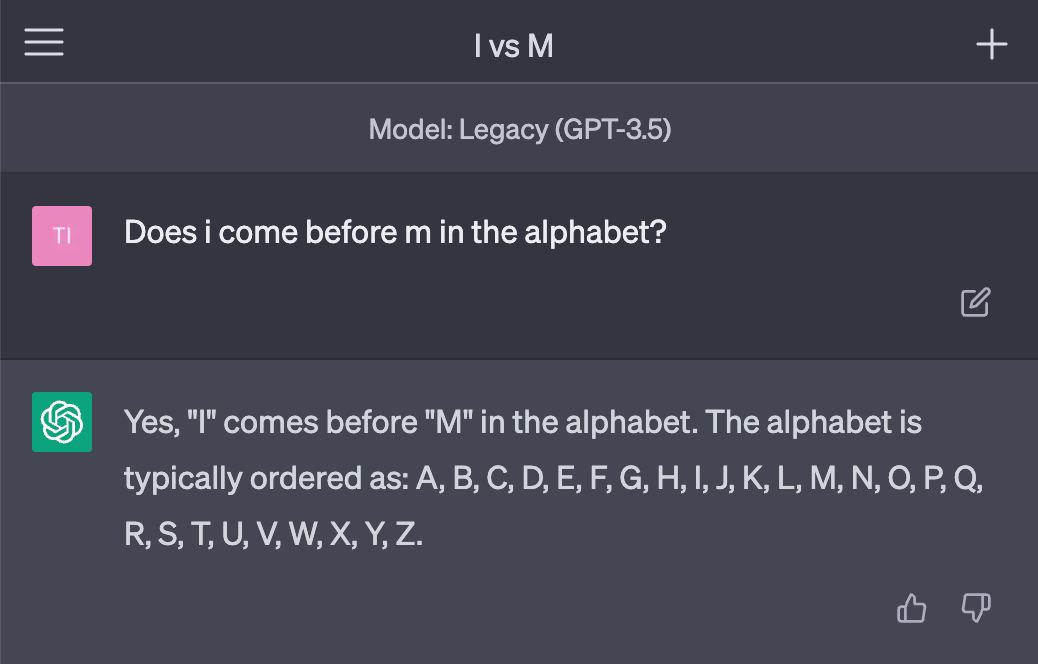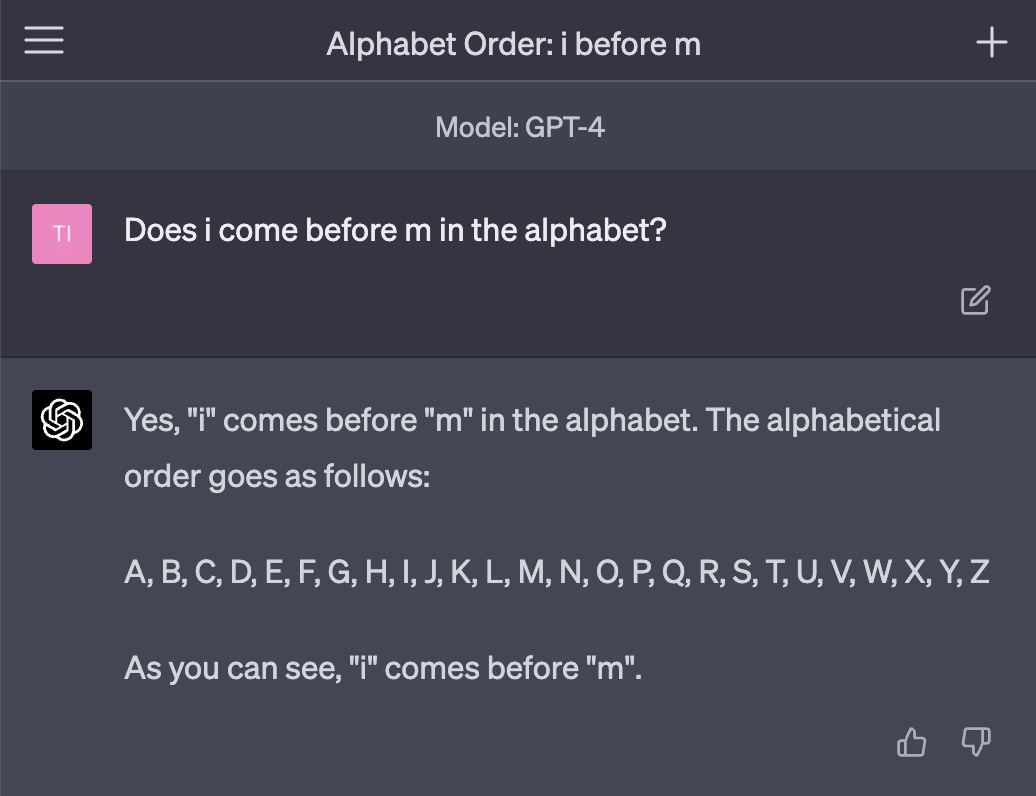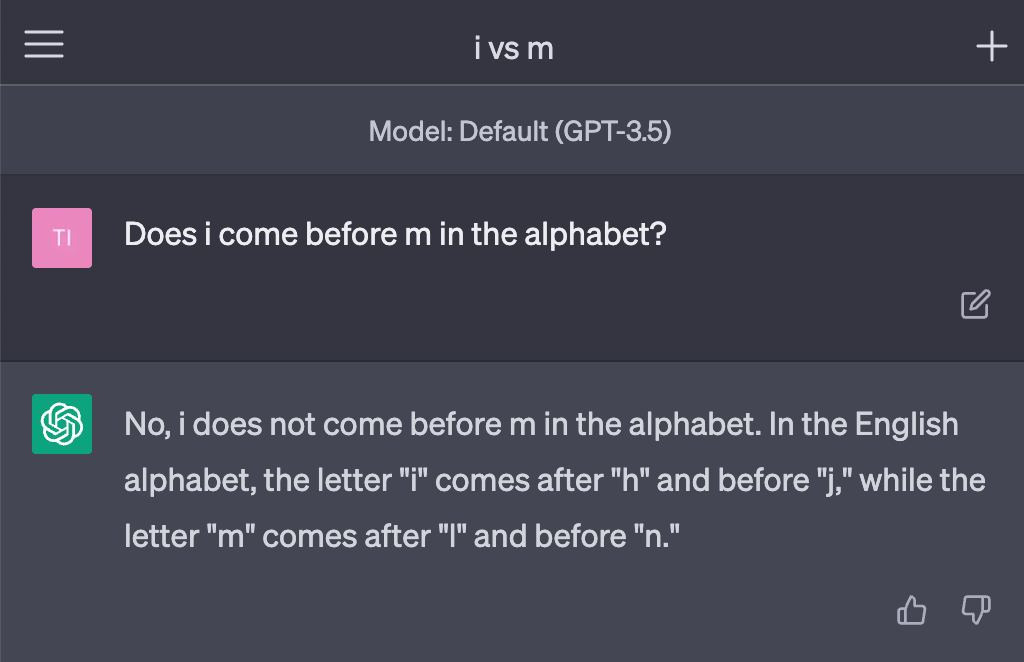

GPT-4 vs. GPT-3.5: A Deep Dive into Language Model Evolution
The evolution of AI language models is a rapid and fascinating journey. While current iterations like GPT-3.5 demonstrate impressive capabilities, understanding their nuances and comparing them to their predecessors and successors is crucial for appreciating their advancements. This analysis explores the subtle yet significant differences, particularly in how they process and interpret information, using a specific linguistic test.
The Alphabetical Challenge: Testing Language Model Comprehension
To illustrate these differences, we posed a seemingly simple question: «Does the letter ‘i’ come after the letter ‘m’ in the English alphabet?» This question, while straightforward for humans, serves as a revealing benchmark for the logical reasoning and contextual understanding of AI models.
Performance Breakdown: A Tale of Two GPT-3.5 Versions and GPT-4
Our findings highlight a distinct progression in AI’s ability to grasp such queries:
- Current GPT-3.5: This version approached the question with a literal, almost pedantic interpretation. It responded by stating, «No, the letter ‘i’ follows the letter ‘h’, and the letter ‘m’ is between ‘l’ and ‘n’.» While factually correct about the individual letter positions, it failed to directly address the comparative nature of the original question, missing the core intent. This indicates a less sophisticated understanding of relational logic.
- Older GPT-3.5 & New GPT-4: In contrast, both the older GPT-3.5 model and the advanced GPT-4 model provided the correct and direct answer. They understood the question’s premise and accurately concluded that «i» precedes «m» in the English alphabet. This demonstrates a more refined ability to interpret intent and provide a concise, relevant response.
Understanding the Nuances: Beyond Simple Fact Retrieval
This comparison underscores that advancements in AI are not just about increasing data processing power but also about enhancing the models’ capacity for:
- Contextual Understanding: Recognizing the underlying meaning and intent behind a user’s query, rather than just processing keywords.
- Logical Reasoning: Applying logical deduction to answer comparative or relational questions effectively.
- Conciseness and Relevance: Delivering answers that are not only accurate but also directly address the user’s specific need.
The leap from the current GPT-3.5’s literal interpretation to the accurate and direct answers of its older counterpart and GPT-4 signifies significant progress in natural language understanding and artificial intelligence development. As these models continue to evolve, we can expect even more sophisticated comprehension and interaction.
Discover the Future of AI Language Models
Curious to see how advanced AI can solve your complex challenges? Explore the capabilities of cutting-edge language models and unlock new possibilities for your business. [Explore AI Solutions](/ai-solutions)
Contact Us: https://t.me/MLM808

